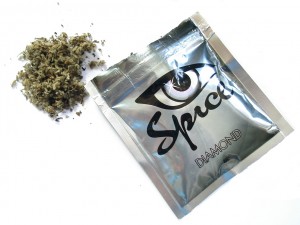A new report from the state health department confirms alarming facts about synthetic drugs that have overwhelmed emergency responders in Anchorage.
Researchers with the state’s epidemiology division looked at hundreds of medical records from emergency rooms in two Anchorage hospitals during a six-week period this summer [July 15 – Sept 30]. More than 150 visits were flagged as cases that were likely Spice-related. Twenty percent of the patients were admitted multiple times for Spice-related medical emergencies.

Louisa Castrodale is an epidemiologist with the state, and says this is the first systematized review of how Spice is impacting emergency rooms in Anchorage.
“It’s really tricky because there isn’t just one code or one stand-out diagnosis that you could look for, so just in the process of trying to more systematically look at this we’ve kind of created for ourselves more of a baseline.”
Eleven different chemical compounds turned up in toxicology screenings when samples were sent to a lab in California. The report notes that the range of compounds is one reason for the array of adverse reactions in users, which run the gamut from unconsciousness to states of severe agitation.
“Some of the products that were sampled really had some of the newer, more potent synthetic cannabinoids present in them, and not only present singularly but blended together. So when we’re thinking about Spice and the adverse health effects we’re really worried about the unpredictability in these chemicals.”
The findings also show that of 10 deaths examined, four involved synthetic cannabinoids as either a main or contributing factor.
Zachariah Hughes reports on city & state politics, arts & culture, drugs, and military affairs in Anchorage and South Central Alaska.
@ZachHughesAK About Zachariah




